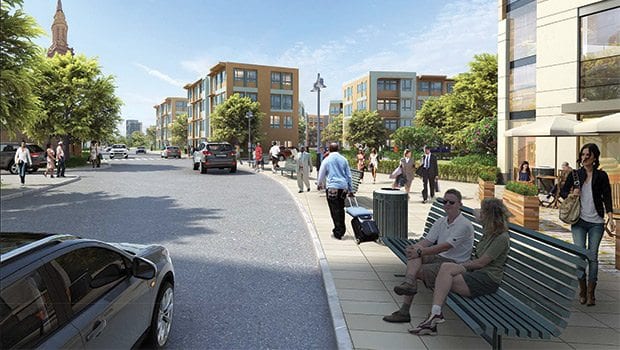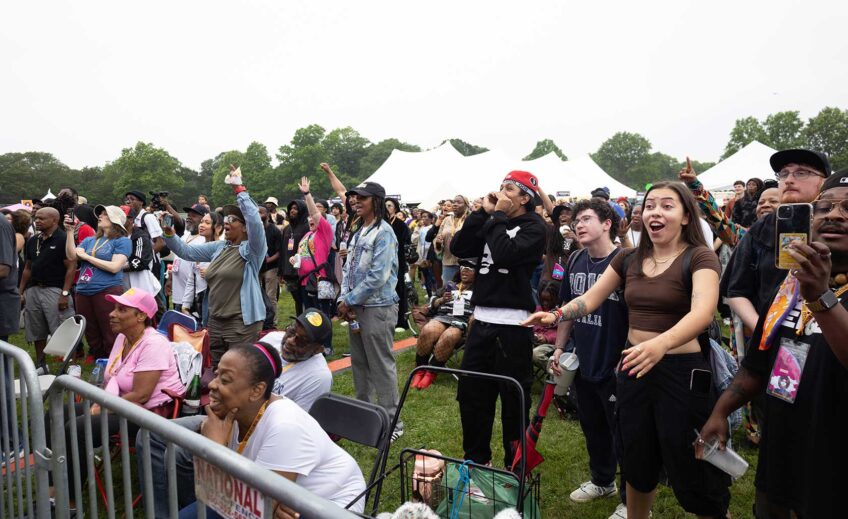Hopes pinned on fed grant for Whittier Choice plans
Fully realizing project may rest on HUD funds

The future of long-neglected corner of Lower Roxbury soon could be decided by a panel of federal officials at the Department of Housing and Urban Development.
Two weeks ago, the Boston Housing Authority, Preservation of Affordable Housing, Inc. and Madison Park Development Corporation submitted an application for a $30 million federal grant. If awarded, it will allow the team to make real their planned development project in Roxbury, which includes commercial space and mixed-income housing, Kate Bennett, deputy administrator of Planning and Stability for the BHA, told the Banner.

Author: Photo: Courtesy of Preservation of Affordable Housing Inc.Renderings show the proposed Whittier Street site.
The mixed-use plan
The BHA, POAH and Madison Park propose to redevelop the current 200-unit Whittier Street public housing site on Cabot Street and bring more housing and commercial space to the neighborhood. Under their plan, the development team would raze the existing housing project, constructing 427 affordable, middle- income and market rate units on the site and on nearby properties, Bennett said. Of these, 210 will be deeply subsidized, 99 designated for those making up to 60 percent of Area Median Income, 82 for those with moderate-incomes of 60-80 percent AMI and 81 offered at market rate.
The current Whittier site has 200 units with 72 parking spaces. New plans will bring that to 130 parking spaces for 316 units, raising the unit to parking space ratio.
The team also would create 14,225 square feet commercial space for local small businesses. Madison Park is working to identify how to set up the space to meet business needs best, Bennett said. Offerings to the neighborhood at large include public art and public safety improvements such as better lighting around Dudley Square, she added. Services provided under the project include early education, after school, tutoring and career pathway programming for children.
The price tag
The total project cost is pegged at more than $1 billion, according to Bennett.
To help pay for it, the development team submitted an application for a competitive national grant that awards up to $30 million each for four projects.
The federal Department of Housing and Urban Development’s Choice Neighborhood grant is awarded to support locally-driven efforts to “address struggling neighborhoods with distressed public or HUD-assisted housing” that involve a holistic strategy to both transform the housing and the surrounding neighborhood, according to HUD’s website. The Choice Neighborhood program focuses on plans that provide mixed-income housing, services to improve youth educational outcomes and amenities that will encourage investment in neighborhoods generating commercial activity and higher levels of safety.
The prospects
Bennett said that HUD is expected to receive two to three dozen applicants for its Choice Neighborhoods grant. By October, the Whittier Choice team should find out if they are among the group of finalists selected, she said.
The Whittier project could begin September 2017 and be completed by June 2020 if HUD approvals and funding come through, according to Madison Park DC’s online description of the project.
But the grant is no sure thing. The development team applied for it last year, and although they made it to the final round, they were one rank too low to receive funding. Out of thirty-four applicants, Whittier Choice placed sixth. Only the top five entries received grants. Still, the project received positive feedback and HUD encouraged them to apply again, Bennett said.
Bennett said that failing to get HUD funding would not necessarily sound a death knell on the project. There is hope that it still could progress, but in a scaled-back form and on a slower schedule.
“If we don’t get the grant, we’ll try very hard to still move forward with the initial phase of the project, but we won’t have the funding to do the public infrastructure or the community services piece of it, and we won’t have funding for the other phases of the project,” Bennett told the Banner. “If we don’t get the grant at this point, it’s just not a certain path.”
Since the previous year’s disappointment, the development team has revised their vision and application.
“We particularly improved the neighborhood’s plan in terms of focusing on public infrastructure and amenities that could be really transformative around the neighborhood strong housing plan,” Bennett said.
The construction is less dense under the new vision, with more open green space and through streets, and smaller blocks of housing that better align with the rest of the neighborhood, she said.






